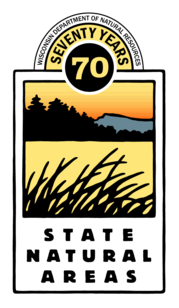DNR Biologist Finds “Holy Grail” Of Rare Plants In State Natural Area

A Wisconsin Department of Natural Resources (DNR) conservation biologist has found the “holy grail” of a rare plant in Wisconsin: A green violet long thought gone from the state, but growing by the hundreds in a State Natural Area (SNA) in west central Wisconsin.
The species (Hybanthus concolor) was last documented in Wisconsin in 1958 when it was collected from a site in Grant County. That site was severely impacted by grazing and the species was thought to no longer grow in the state.
“It was pretty exciting,” said DNR Conservation Biologist Ryan O’Connor. “It really drives home several things, including that there are still important things to discover on State Natural Areas and that our SNAs are vital to the conservation of plants and animals, some of which are found nowhere else in the state.”
This isn’t the first rare plant finding within Wisconsin’s State Natural Areas – 75% of wildlife species listed in Wisconsin as threatened or endangered, and 90% of state-listed plants are supported on State Natural Areas. These sites, owned both by the DNR and more than 50 partners, represent Wisconsin’s best native forests, wetlands, prairies and geological and archaeological sites. Their primary purpose is to maintain this natural heritage for future generations.
O’Connor’s discovery also underscores the importance of having experts conduct “biotic inventory surveys” to document the different rare species on state-owned lands and assess how the natural community they are part of is faring.
Natural communities are defined by the soils, geology, plants and animals that evolved together to form different types of prairies, wetlands and forests. Wisconsin has more than 100 of these distinct communities, some of which are globally rare. The state legislature created the State Natural Areas program to conserve examples of these communities 70 years ago.
The DNR uses the inventory survey information to inform master plans determining how to manage properties and prioritize the attention they receive.

Green Violets At A Glance
To learn more about State Natural Areas and to find one near you, click here. |






